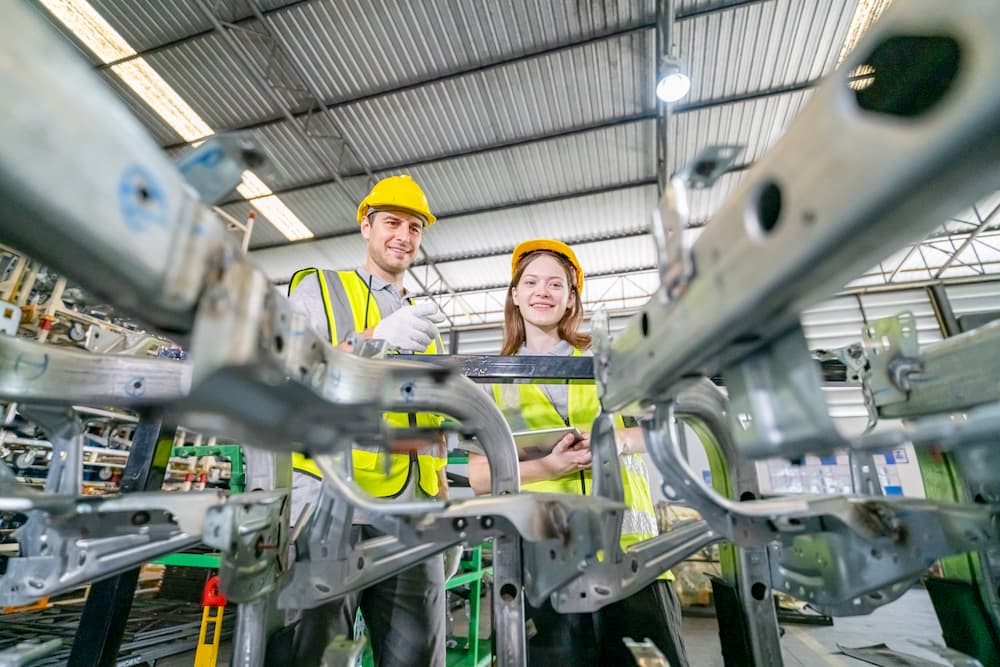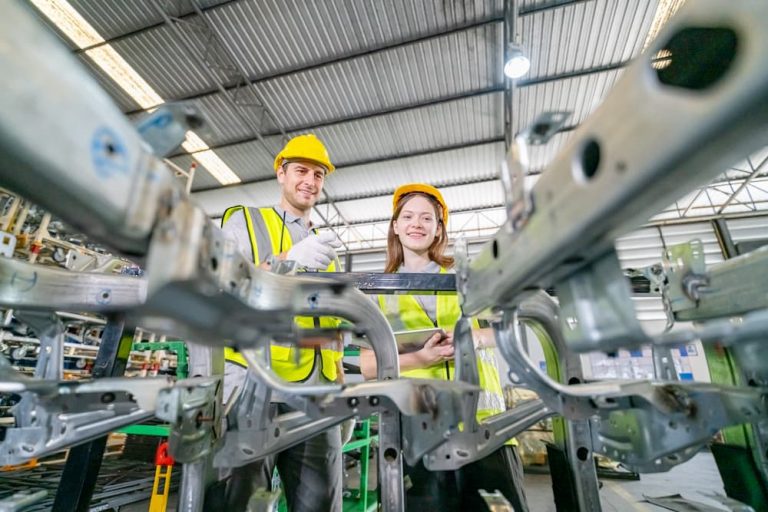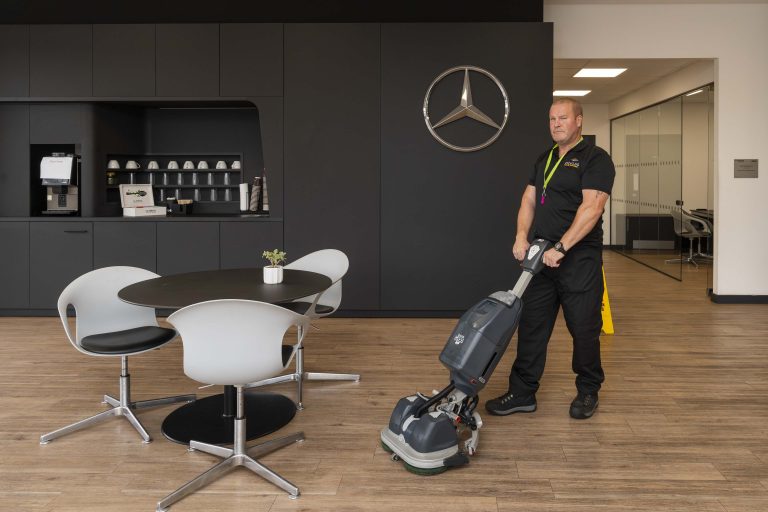For many warehouse and manufacturing sites, cleaning is built into daily operations. Floors are swept, bins are emptied, and touchpoints are wiped down. But what if this routine is missing the most critical areas for safety, compliance and productivity?
In our experience at Oculus, even well-run warehouses often overlook areas that pose significant operational and regulatory risk. These areas are not just neglected. They are commonly misunderstood or excluded due to access, assumptions or blurred responsibilities.
In this article, we reveal the five most commonly overlooked warehouse cleaning areas and explain why including them in your cleaning routine is vital for compliance, efficiency and safety.
Why ‘Clean Enough’ Is No Longer Good Enough
A tidy floor and empty bins may look like a clean site, but cleanliness in manufacturing and logistics goes much deeper. Dust, debris and microbial build-up in less obvious areas can:
Compromise audit performance and legal compliance
Reduce the lifespan of equipment and infrastructure
Contribute to pest infestations or air quality issues
Increase the risk of slips, trips or fire hazards
Damage customer stock or packaging integrity
A thorough cleaning strategy is a key part of operational excellence. It is also a frontline defence against environmental, health and safety risks, particularly in sectors governed by ISO standards, HACCP, BRCGS or COSHH requirements.
1. High-Level Racking and Overhead Structures
Why it is often missed
These areas are hard to reach and are rarely visible from the floor. Cleaning teams often lack the equipment or training to access them safely.
Why it matters
Dust and fibre accumulation above active areas can fall onto products, machinery or workers. In regulated environments such as food and pharmaceutical, this is a contamination risk. In any warehouse, the build-up of fine dust near lighting or ventilation systems is also a fire hazard.
Best practice
Schedule quarterly or biannual high-level cleans using MEWPs, scaffold towers or high-reach vacuums
Use HEPA-filtered vacuum systems to minimise air disturbance
Maintain documentation for audits or internal inspections
High-level cleaning is especially important in areas storing packaging, food-grade materials or sensitive electronics.
2. Warehouse Dock Levellers and Loading Bays
Why it is often missed
These are transitional zones between indoors and outdoors, and responsibility for cleaning is often unclear between cleaning staff, transport teams and warehouse operatives.
Why it matters
Dock pits and loading bays accumulate grime, oil, rubber residue and brake dust. When left uncleaned, they pose a serious slip risk, particularly in wet weather. These areas also become hotspots for cross-contamination and pest ingress if not managed.
Best practice
Sweep and degrease loading bays daily or after heavy use
Schedule deep cleaning of dock levellers weekly or monthly
Include dock seals, lift plates and bumpers in the cleaning checklist
Including these areas in your cleaning SOP not only improves safety but supports audit readiness in regulated sectors.
3. Behind and Underneath Fixed Machinery
Why it is often missed
Cleaning teams typically do not have authority or training to clean beneath static production lines or heavy equipment. These areas are often left untouched between maintenance cycles.
Why it matters
Debris build-up under equipment presents a number of risks. These include increased fire potential, harbourage points for pests and airflow restrictions that reduce machine cooling efficiency. In some environments, such as food and packaging, these are also contamination hotspots.
Best practice
Coordinate with engineering or facilities teams to clean during scheduled maintenance
Use dry vacuums or manual collection methods to avoid introducing moisture
Implement a lock-out and tag-out protocol to ensure safe access
Cleaning beneath equipment should be recorded in both your maintenance and hygiene logs.
4. Mezzanines, Catwalks and Elevated Safety Rails
Why it is often missed
These structures are often outside main workflow areas, with low foot traffic. As a result, they are visually ignored and logistically inconvenient to clean without working at height procedures.
Why it matters
Mezzanine floors and walkways gather dust, offcuts and packaging debris. These pose fire hazards and slipping risks. In addition, cluttered or dust-covered safety rails may breach HSE requirements and hinder emergency procedures.
Best practice
Schedule monthly cleaning for mezzanine floors, guardrails and stairwells
Ensure anti-slip degreasing agents are used on metal walkways
Include these areas in RAMS documentation and safety audits
Mezzanines and overhead walkways should be cleaned with the same frequency and rigour as ground-level paths.
5. Air Handling Units, Filters and Extraction Ducts
Why it is often missed
Air systems are usually outside the remit of cleaning contractors and may be assumed to be a maintenance-only concern. As a result, filters and ducts are overlooked for months or even years.
Why it matters
Poor air quality affects both staff and stock. Dust-laden air contributes to respiratory problems, reduced product hygiene and equipment downtime. In some facilities, it may also breach COSHH regulations or ISO 45001 guidelines.
Best practice
Schedule quarterly inspection and cleaning of air handling systems
Replace filters based on manufacturer recommendations or site-specific demands
Use fogging or electrostatic disinfection in clean zones or sensitive production areas
Ventilation systems should be part of both your cleaning and preventative maintenance plans.
Summary Table: Are These Areas in Your Cleaning Schedule?
| Warehouse Area | Why It Is Missed | Risk If Ignored |
| High-level racking and structures | Hard to reach and rarely inspected | Dust fall, fire hazard, contamination |
| Dock levellers and loading bays | Cross-responsibility between teams | Slips, contamination, regulatory risk |
| Behind fixed machinery | Needs access approval and specialist knowledge | Pests, fire, operational breakdowns |
| Mezzanines and catwalks | Low-traffic but high dust collection | Obstructed safety features, slips and trips |
| Air handling units and filters | Often handled by engineers not cleaners | Airborne contamination, respiratory hazards |
How Oculus FM Helps Eliminate Cleaning Blind Spots
At Oculus, we specialise in industrial and manufacturing cleaning services that go beyond the surface. Our teams are trained in:
High-level access using MEWPs and scaffolding
Safe access protocols for confined or restricted zones
Coordinated work during shift changeovers or downtime
Use of industrial vacuum systems and degreasers
Compliance documentation including RAMS, COSHH and BRCGS support
We help our clients meet audit standards, reduce operational risks and maintain hygienic, safe and compliant working environments.
Book a Site Cleaning Risk Assessment
Think your warehouse is clean? Let us help you identify what you might be missing. Oculus Group offers free site assessments, compliance reviews and tailored cleaning proposals for warehouses, factories and manufacturing sites across the UK. Talk to an expert today.




